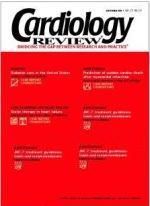Vasopressin improves survival in asystolic cardiac arrest
Among patients with out-of-hospital cardiac arrest, those with asystole are more likely to survive to hospital admission and hospital discharge when administered vasopressin rather than epinephrine, according to a new study that appears in the New England Journal of Medicine (2004;350[2]:105-113).
Epinephrine has been used during cardiopulmonary resuscitation (CPR) for more than 100 years, but can cause increased myocardial oxygen consumption, ventricular arrhythmias, and myocardial dysfunction after resuscitation. Nevertheless, guidelines for CPR recommend the use of epinephrine for resuscitation, with vasopressin considered a second-choice agent.
Vasopressin was explored as an option in patients with cardiac arrest because vasopressin levels are higher in patients who are successfully resuscitated than in those who die. In the study, conducted by investigators at Leopold-Franzens University in Innsbruck, Austria, 1,219 cardiac arrest patients were randomized to receive either vasopressin or epinephrine. If spontaneous circulation was not restored after two injections of either study drug, an additional injection of epinephrine was permitted.
The overall survival rate was 9.9% in each study group. Survival to hospital admission and hospital discharge was similar among the patients with ventricular fibrillation or pulseless electrical activity. Among the patients with asystole, however, 4.7% of those given vasopressin survived to hospital discharge compared with only 1.5% of those given epinephrine. The authors speculate that vasopressin may be a more effective vasopres-sor than epinephrine in patients with asystole, “resulting in better coronary perfusion pressure during
cardiac resuscitation.”
Furthermore, among 732 patients in whom spontaneous circulation was not restored with either study drug, additional treatment with epinephrine improved survival in the group assigned to vasopressin but not in the group assigned to epinephrine. “This finding suggests that the presence of one of these drugs may enhance the effects of the other, especially during prolonged ischemia,” the authors wrote. In animal studies of ischemia, coronary perfusion pressures are tripled with the combination compared with either drug alone. Asystole is responsible for 20% to 40% of sudden deaths in the United States, and it is the rhythm that is most refractory to resuscitation attempts.
In an editorial that accompanied the article, Kevin M. McIntyre, MD, associate professor, Harvard Medical School, Boston, called the findings “an important breakthrough in the science of resuscitation,” and state the advances should be “translated into a new standard of care without delay.” The rate of survival after asystolic cardiac arrest may be among the highest achieved in a major resuscitation, he noted.
Whereas epinephrine consumes oxygen, vasopressin increases coronary blood flow and the availabil-ity of oxygen to the heart, which may explain their disparate effects in asystolic cardiac arrest, accord-ing to Dr. McIntyre. The use of vasopressin in resuscitation protocols should probably be incorporated immediately, he wrote, because few patients with asystolic cardiac arrest are successfully resuscitated, and there is no added risk with the use of vasopressin.
